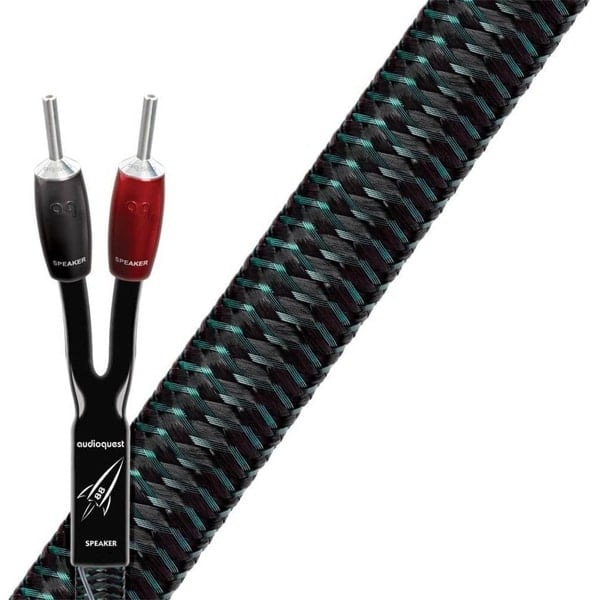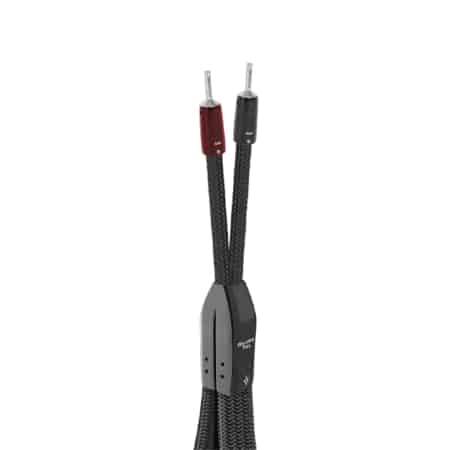Description
AudioQuest Rocket 88 speaker cable
The Rocket 88 features AudioQuest’s patented Dielectric-Bias System (DBS) and swaps out long-grain copper for solid perfect-surface copper+ (PSC+). DBS effectively lowers the noise-floor, allowing for enhanced clarity and detail in your music listening experience. Furthermore, the increased presence of PSC+ contributes to a refined, tranquil, and organic sonic character, delivering a more relaxed and natural audio presentation.
Solid perfect-surface copper+ (PSC+) conductors
Solid conductors prevent electrical and magnetic strand interaction. PSC+ solid-copper minimizes distortion caused by grain boundaries and maximizes linear RF noise dissipation.
Double star-quad geometry
The relationship between conductors defines a cable’s most basic electrical values (capacitance and inductance). However, even when those variables are kept in reasonably neutral balance, the particular geometric relationship between conductors greatly affects the sound. Star-quad geometry is not only vastly superior to conductors run in parallel, but also to the same conductors as two twisted pairs.
Dielectric-bias system with radio frequency trap
All insulation between two or more conductors is also a dielectric whose properties will affect the integrity of the signal. When the dielectric is unbiased, dielectric involvement (absorption and non-linear release of energy) causes different amounts of time delay (phase shift) for different frequencies and energy levels, which is a real problem for very time-sensitive multi-octave audio. The inclusion of an RF Trap (developed for AudioQuest’s Niagara Series of power products) ensures that radio-frequency noise will not be induced into the signal conductors from the DBS field elements.
Carbon-based noise- and crosstalk-dissipation system
This cable’s negative conductors are covered with partially conductive carbon-loaded polyethylene. This remarkable material reduces radio-frequency garbage being fed back into the amplifier. The sonic benefit is exactly the same reduction in “hash” and improved dimensionality that comes whenever RF interference is reduced in an audio circuit. In addition, a carbon layer damps interaction between positive and negative conductors, and an external carbon-based noise-dissipation system reduces external interference.
Foamed-polyethylene insulation (for all positive conductors)
Any solid material adjacent to a conductor is actually part of an imperfect circuit. Wire insulation and circuit board materials all absorb energy. Some of this energy is stored and then released as distortion. This cable, however, uses air-filled foamed-polyethylene insulation on both conductors. Because air absorbs next to no energy and polyethylene is low-loss and has a benign distortion profile, foamed-PE, with its high air content, causes much less of the out-of-focus effect common to other materials.
KEY FEATURES:
• Dielectric-bias system (DBS) for lower noise-floor and enhanced clarity
• Solid perfect-surface copper+ (PSC+) for reduced distortion and refined audio presentation
• Double star-quad geometry for superior sound quality and conductor performance









